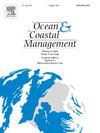Modeling the instant acidification effects of open-loop scrubber discharges along shipping routes
IF 5.4
2区 环境科学与生态学
Q1 OCEANOGRAPHY
引用次数: 0
Abstract
The widespread use of high-sulfur fuels in maritime shipping has raised serious environmental concerns, prompting the International Maritime Organization (IMO) to mandate low-sulfur fuels or exhaust gas cleaning systems (EGCS). However, open-loop EGCS discharges are highly acidic, posing potential risks to busy shipping routes and coastal ecosystems. This study developed a discrete equation-based model to assess instant seawater acidification from open-loop EGCS discharges under three scenarios. The effects of ship size and ocean currents were also examined. In the single-ship single-discharge scenario, surface pH fell below 7 within 20 m in 60 s. Continuous discharge from one or two ships led to pH levels below 4.2 in the same area and time frame, indicating wider acidification impacts. pH recovery to 7 took 1 h for single discharge, and up to 30 h for two-ship continuous discharge, suggesting prolonged acidification from combined discharges. Sensitivity analysis showed horizontal currents increased pollutant spread, while vertical currents intensified local acidification. Larger vessels caused more severe pH drops, despite similar spatial patterns across ship types. These findings highlight the environmental risks of open-loop EGCS use in coastal waters and underscore the need for stricter regulations, improved discharge strategies, and continuous monitoring to protect marine ecosystems.
模拟沿航线开环洗涤器排放物的即时酸化效应
高硫燃料在海上运输中的广泛使用引发了严重的环境问题,促使国际海事组织(IMO)强制要求使用低硫燃料或废气净化系统(EGCS)。然而,开环EGCS排放具有高酸性,对繁忙的航线和沿海生态系统构成潜在风险。本研究建立了一个基于离散方程的模型,以评估三种情况下EGCS开环排放造成的瞬时海水酸化。还研究了船舶尺寸和洋流的影响。单船单次排放时,60 s内20 m范围内表面pH值降至7以下。在同一区域和同一时间段内,一艘或两艘船舶的连续排放导致pH值低于4.2,这表明酸化影响更大。单船排放需1小时恢复pH至7,双船连续排放需30小时,说明联合排放酸化时间较长。敏感性分析表明,水平流增加了污染物扩散,而垂直流加剧了局部酸化。尽管不同船型的空间模式相似,但较大的船只造成的pH值下降更严重。这些发现强调了在沿海水域使用开环EGCS的环境风险,并强调需要更严格的法规、改进的排放策略和持续监测,以保护海洋生态系统。
本文章由计算机程序翻译,如有差异,请以英文原文为准。
求助全文
约1分钟内获得全文
求助全文
来源期刊

Ocean & Coastal Management
环境科学-海洋学
CiteScore
8.50
自引率
15.20%
发文量
321
审稿时长
60 days
期刊介绍:
Ocean & Coastal Management is the leading international journal dedicated to the study of all aspects of ocean and coastal management from the global to local levels.
We publish rigorously peer-reviewed manuscripts from all disciplines, and inter-/trans-disciplinary and co-designed research, but all submissions must make clear the relevance to management and/or governance issues relevant to the sustainable development and conservation of oceans and coasts.
Comparative studies (from sub-national to trans-national cases, and other management / policy arenas) are encouraged, as are studies that critically assess current management practices and governance approaches. Submissions involving robust analysis, development of theory, and improvement of management practice are especially welcome.
 求助内容:
求助内容: 应助结果提醒方式:
应助结果提醒方式:


